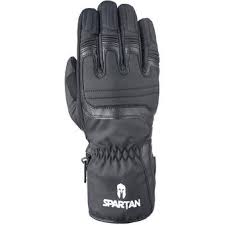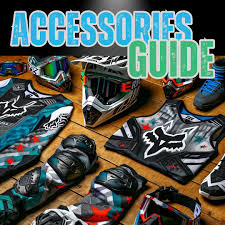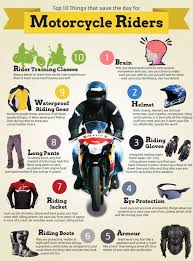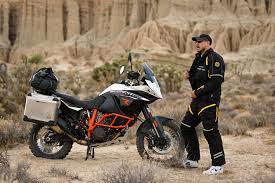
Best Protective Gear for Motorcycle Riding
The Best Protective Gear for Motorcycle Riding
Riding a motorcycle can be an exhilarating experience, but it’s important to prioritize safety while on the road. One of the key ways to stay safe while riding is by wearing the right protective gear. Here are some essential items every motorcyclist should consider:
Helmet
A helmet is the most crucial piece of protective gear for any rider. It protects your head in case of a crash and can prevent serious injuries or even save your life. When choosing a helmet, make sure it fits properly and meets safety standards.
Jacket
A sturdy motorcycle jacket made of durable materials like leather or textile can provide protection against abrasions in case of a fall. Look for jackets with built-in armour on the shoulders, elbows, and back for added impact protection.
Gloves
Quality motorcycle gloves not only protect your hands from injuries but also provide better grip and control while riding. Choose gloves that offer abrasion resistance, impact protection, and weatherproofing to keep your hands safe and comfortable.
Pants
Invest in motorcycle pants with reinforced knees, hips, and seat areas to protect against road rash in case of a slide. Look for options that provide both comfort and protection without compromising on style.
Boots
Durable motorcycle boots with ankle support, toe protection, and non-slip soles are essential for keeping your feet safe while riding. Choose boots that are comfortable for long rides and provide adequate protection in case of an accident.
Remember, wearing proper protective gear can significantly reduce the risk of injury while riding a motorcycle. Invest in high-quality gear that fits well and provides optimal protection to ensure a safer and more enjoyable riding experience.
Top Benefits of Best Protective Gear for Motorcycle Riding: Safety, Comfort, and Style
- Enhances rider safety and reduces the risk of serious injuries in case of accidents.
- Provides protection against abrasions, cuts, and road rash during falls or slides.
- Offers impact protection for vital areas such as head, shoulders, elbows, knees, and back.
- Improves visibility on the road with reflective elements or high-visibility colours.
- Increases overall comfort while riding by providing weatherproofing and ventilation.
- Enhances rider confidence and focus knowing they are well-protected.
- Helps maintain a stylish look while ensuring maximum safety on the road.
- Boosts durability of gear and prolongs its lifespan with proper care and maintenance.
Challenges of Choosing the Best Protective Gear for Motorcycle Riding
- Cost – High-quality motorcycle gear can be expensive, making it a significant investment.
- Comfort – Some protective gear may feel restrictive or uncomfortable, especially during long rides.
- Maintenance – Proper care and maintenance of gear, such as cleaning and storage, can be time-consuming.
- Style – While safety is paramount, some riders may find that protective gear compromises their desired style or aesthetic.
- Fitment – Finding the right size and fit for each piece of gear can be challenging, leading to potential discomfort or inefficacy.
- Climate – Depending on the weather conditions, wearing full protective gear may result in overheating during hot weather or inadequate warmth in cold temperatures.
Enhances rider safety and reduces the risk of serious injuries in case of accidents.
Wearing the best protective gear for motorcycle riding significantly enhances rider safety and reduces the risk of serious injuries in case of accidents. By investing in high-quality helmets, jackets, gloves, pants, and boots, riders can better protect themselves from potential harm while on the road. These gear items are designed to provide impact protection, abrasion resistance, and overall safety measures that can make a crucial difference in the event of a crash. Prioritising protective gear not only promotes responsible riding practices but also ensures that riders can enjoy their journeys with greater peace of mind knowing they are well-equipped to handle unforeseen situations effectively.
Provides protection against abrasions, cuts, and road rash during falls or slides.
One of the key advantages of wearing the best protective gear for motorcycle riding is its ability to provide essential protection against abrasions, cuts, and road rash in the event of falls or slides. The durable materials and reinforced construction of quality motorcycle gear act as a shield, reducing the impact of friction with the road surface and minimizing injuries to the rider’s skin. By wearing protective gear designed to withstand such forces, motorcyclists can significantly reduce the risk of serious harm and ride with greater confidence knowing they are well-equipped to handle unexpected situations on the road.
Offers impact protection for vital areas such as head, shoulders, elbows, knees, and back.
One of the key advantages of wearing the best protective gear for motorcycle riding is the crucial impact protection it provides for vital areas of the body. From the head to the shoulders, elbows, knees, and back, quality motorcycle gear is designed to absorb and distribute impact energy in case of a crash or fall. By safeguarding these critical body parts, riders can significantly reduce the risk of serious injuries and enhance their overall safety on the road. Investing in protective gear that prioritises impact protection ensures that motorcyclists can ride with greater confidence and peace of mind, knowing that they are well-equipped to handle unexpected situations while enjoying their passion for riding.
Improves visibility on the road with reflective elements or high-visibility colours.
Enhancing visibility on the road is a crucial advantage of wearing the best protective gear for motorcycle riding. Incorporating reflective elements or opting for high-visibility colours in gear such as jackets, helmets, and gloves can significantly increase a rider’s presence on the road, especially in low-light conditions or adverse weather. These features not only make motorcyclists more noticeable to other road users but also contribute to overall safety by reducing the risk of accidents due to poor visibility. By prioritising protective gear with reflective elements or high-visibility colours, riders can enhance their safety and confidence while navigating through traffic and various road conditions.
Increases overall comfort while riding by providing weatherproofing and ventilation.
One significant advantage of investing in the best protective gear for motorcycle riding is the enhancement of overall comfort during your rides. High-quality gear offers weatherproofing to shield you from the elements, keeping you dry and comfortable in various conditions. Additionally, proper ventilation systems in the gear help regulate temperature and airflow, preventing overheating and ensuring a more pleasant riding experience. By prioritising protective gear that combines weatherproofing and ventilation, riders can enjoy increased comfort on their journeys while staying safe on the road.
Enhances rider confidence and focus knowing they are well-protected.
Wearing the best protective gear for motorcycle riding not only provides physical protection but also enhances rider confidence and focus. Knowing that they are well-protected by quality gear gives riders a sense of security and peace of mind, allowing them to focus more on the road ahead. With the assurance that they are equipped with the right safety gear, riders can ride with greater confidence, enabling them to enjoy their journey while staying alert and focused on their surroundings. This increased confidence and focus contribute to a safer and more enjoyable riding experience for motorcyclists.
Helps maintain a stylish look while ensuring maximum safety on the road.
Wearing the best protective gear for motorcycle riding not only enhances safety on the road but also allows riders to maintain a stylish look. By choosing gear that combines both fashion and function, motorcyclists can enjoy maximum protection without compromising on their personal style. Whether it’s a sleek leather jacket, trendy gloves, or modern boots, investing in high-quality protective gear ensures that riders can ride with confidence, knowing they are both safe and stylish on their journeys.
Boosts durability of gear and prolongs its lifespan with proper care and maintenance.
Investing in the best protective gear for motorcycle riding not only enhances your safety on the road but also boosts the durability of the gear itself. By providing an additional layer of protection, quality motorcycle gear can withstand the wear and tear of regular use. With proper care and maintenance, such as cleaning, storing correctly, and following manufacturer’s guidelines, you can prolong the lifespan of your gear, ensuring it remains effective and reliable for years to come.
Cost – High-quality motorcycle gear can be expensive, making it a significant investment.
One notable drawback when it comes to the best protective gear for motorcycle riding is the cost factor. High-quality motorcycle gear, such as helmets, jackets, gloves, pants, and boots, can often come with a hefty price tag, making it a considerable investment for riders. While the cost may deter some individuals from purchasing top-of-the-line gear, it’s essential to remember that investing in quality protective equipment is crucial for ensuring safety on the road. Riders should weigh the upfront cost against the potential long-term benefits of superior protection and durability that can ultimately contribute to their well-being while riding.
Comfort – Some protective gear may feel restrictive or uncomfortable, especially during long rides.
One downside of the best protective gear for motorcycle riding is the issue of comfort. While essential for safety, some gear can feel restrictive or uncomfortable, particularly during long rides. Riders may find certain protective items cumbersome or tight-fitting, leading to discomfort and reduced enjoyment while on the road. Balancing the need for protection with comfort is crucial to ensure that riders can focus on their journey without distractions or physical strain caused by ill-fitting gear.
Maintenance – Proper care and maintenance of gear, such as cleaning and storage, can be time-consuming.
One notable downside of investing in the best protective gear for motorcycle riding is the aspect of maintenance. Ensuring that your gear remains in top condition requires time and effort, from regular cleaning to proper storage practices. This additional maintenance can be time-consuming for riders who already lead busy lives. However, it is crucial to remember that proper care and maintenance are essential for preserving the effectiveness and longevity of your protective gear, ultimately contributing to your safety on the road.
Style – While safety is paramount, some riders may find that protective gear compromises their desired style or aesthetic.
While safety should always be the top priority when it comes to motorcycle riding, one common drawback of the best protective gear is its impact on style. Some riders may feel that certain protective gear compromises their desired aesthetic or personal style. Finding a balance between safety and fashion preferences can be a challenge for those who want to look stylish while staying protected on the road. However, with advancements in design and technology, there are now more options available that offer both safety features and a fashionable appearance, allowing riders to express their individuality without sacrificing protection.
Fitment – Finding the right size and fit for each piece of gear can be challenging, leading to potential discomfort or inefficacy.
One significant drawback of investing in the best protective gear for motorcycle riding is the issue of fitment. Ensuring that each piece of gear, such as helmets, jackets, gloves, pants, and boots, fits correctly can be a challenging task. Finding the right size and fit for each item is crucial for optimal protection and comfort while riding. A poorly fitting piece of gear can lead to potential discomfort, restriction of movement, or inefficacy in providing the necessary protection in case of an accident. Riders must carefully consider sizing charts, try on different options, and seek expert advice to overcome this con and ensure that their protective gear offers the best possible fit for enhanced safety on the road.
Climate – Depending on the weather conditions, wearing full protective gear may result in overheating during hot weather or inadequate warmth in cold temperatures.
One potential drawback of wearing the best protective gear for motorcycle riding is the impact of climate conditions. While full protective gear is essential for safety, it can pose challenges in extreme weather conditions. In hot weather, wearing heavy gear may lead to overheating and discomfort, affecting the rider’s focus and comfort. Conversely, during cold temperatures, the gear may not provide sufficient warmth, making riding uncomfortable and potentially risky. Finding a balance between protection and climate control is crucial for riders to ensure both safety and comfort on the road.










